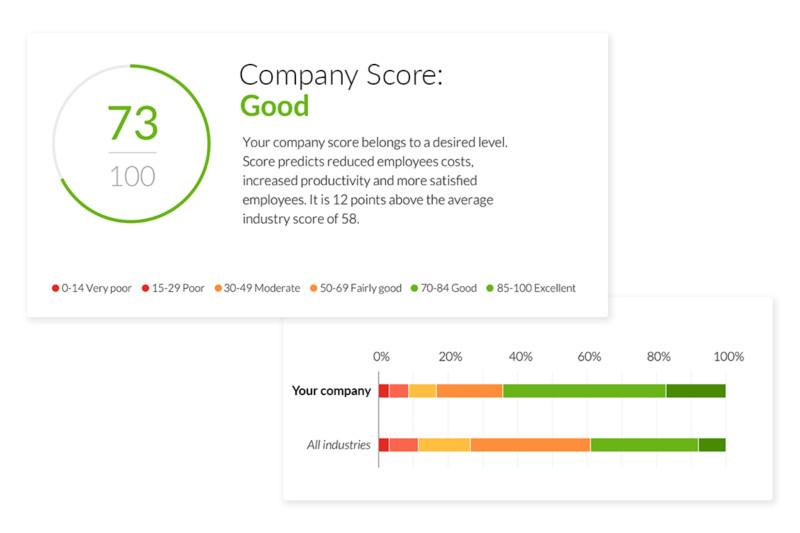
Nowadays there is a lot of talk about employee well-being, but how often is it at the core of a company’s priorities along with finance and product development?
Is employee well-being regularly discussed at the table of the management group? What costs are cut when times are tough in business? Is a well-being strategy in place? Is it executed and developed regularly?
These all are questions that tell us more about the company than values written in the brand book. Genuine interest towards the well-being and resources of the employees should be visible in the day-to-day operations of the organization and the actions of employee well-being should respond to real, recognized needs. An understanding of this is more crucial than ever now we are building new routines in the aftermath of the pandemic.
When it comes to corporate wellness, both the employer and the employee have their own roles and responsibilities. Thus, everyone in the company needs to commit to the well-being strategy, both executing it and developing it. A well-being strategy can’t be given from the management to the employees. Instead, it needs to be built together and the employer must listen the employees’ needs from the beginning of the strategy development.
Different branches of business and different jobs have very different needs and challenges, that all must be paid attention to. A ‘one size fits all’ approach doesn’t work for any strategy development, neither in this case.
A Happy, Healthy and Productive Employee Is a Strategic Success
Even though it’s the workplace well-being that is mainly considered in the organization, the life outside work naturally affects the employee well-being as well. Delightfully, work-life balance has been understood better in recent years.

Of course, an employer can’t interfere in the employees’ free time, but what they can do is offer different tools and support, so the employees can find better balance in their everyday life. And once again, a successful well-being strategy needs to be the basis for this.
Just like achieving the target profits, happy, healthy and productive employees should be seen as a strategic success. Finnish researchers Ossi Aura & Guy Ahonen have concluded* that every euro that is spent in employee well-being generates six-fold returns. A successful well-being strategy supports the strategic goals of the business for real. In addition to the well-being of the employees, the productivity increases – and a caring work environment is a crucial factor when attracting the best new talents.
How Can You Make a Successful Well-being Strategy?
1) Identify needs and set goals
Everything starts from identifying the well-being needs and potential risks of your company. Based on these you can create clear strategic goals. As previously mentioned, everyone in the organization should commit to the well-being strategy and therefore it’s essential to pay attention to employees’ thoughts and ideas from the first day. This is the best way to kick-off the commitment.
There are several different approaches to corporate wellness. Management looks it from a different angle than staff. You should try to find a holistic solution that combines all the different views. Of course, this requires open discussion and a willingness to understand differing opinions and learn from them.
2) Communicate openly and put the strategy into practice
When the well-being strategy is finalized, you should communicate it openly throughout the organization. The strategy should be visible at the workplace and therefore become part of the organization identity.
Employee well-being must be discussed at management level, not a separate task on HR’s table. Therefore, an important part of the well-being strategy work is to update management skills from time to time. So, make sure your managers have the know-how, the skills and the understanding to put the well-being strategy into practice.
3) Monitor effectiveness and develop when needed
When the well-being strategy is put into practice, it’s essential to monitor the effectiveness of operations regularly. Just like in other sectors of the business, the content, the actions and the execution of the well-being strategy are not completed all at once. It takes time to find the recipe for success.

It is worth using some tools and measurements to collect real data about the effectiveness of the well-being strategy. These can be subjective questionnaires, objective measurements or the combination of both.
Utilizing some concrete and numeral data as a part of the well-being strategy makes it possible to see the impact of your wellness investments, make data-driven decisions and verify that you are on the right path.
*Resource: Ossi Aura & Guy Ahonen 2016:, Strategisen hyvinvoinnin johtaminen, Talentum Pro.
Corporate wellness is becoming increasingly important for HR and senior management. Download our free guide and learn how to create a proactive and effective corporate wellness strategy.
You might also be interested in

Firstbeat Life and Wearables – What’s the Difference?
From HRV and sleep monitoring to recovery data, here’s how Firstbeat Life differs from wearables.

Structure Your Day Better with Firstbeat Life’s Real-Time Results
The newest feature in Firstbeat Life – real-time results – give you a glimpse into your stress and recovery status during the measurement. Real-time data allows you to react promptly and…

Back to Work 2: Post-Holiday Blues or Resilience and Rock & Roll Year-Round?
With the summer drawing to a close, now is a great time to ensure that you stay energized during the months ahead. Tiina Hoffman provides some tips on how… This…




